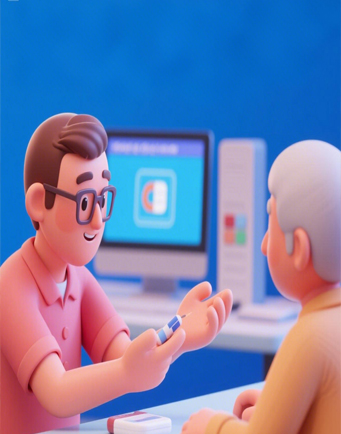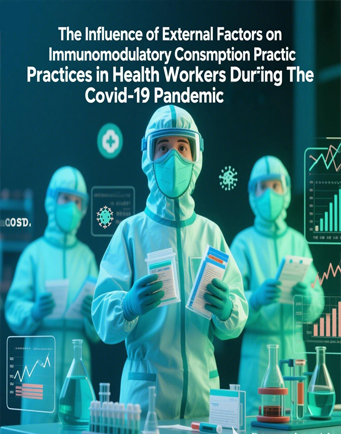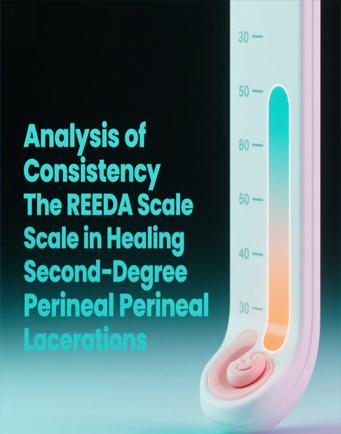Plugging the Gap and Niching the NICHE: Nursing Informatics Competencies for Higher Education
Downloads
Despite the rapid advancement and evolution of nursing informatics applications in healthcare, the incorporation and refurbishing of undergraduate informatics competencies in the curriculum has been organized. the integration of informatics in the Philippine curriculum began decade ago. However, it is still not identified whether these initiatives are successful in enhancing NI skills among graduates considering the low rate of technology utilization by most hospitals in the country. As a result, it requires a global need for nursing informatics competencies to be updated and revisited into the nursing curriculum. The objective of this study is to gather accord from the literature and to determine the definition of fundamental nursing informatics competencies for baccalaureate nursing programs in the Philippines. A review of related studies and corroboration of related literature such as different nursing curricula, perspectives of nursing informatics competencies in every country and to the resource organizations standards providing trainings, conducts research and guide HEIs was performed. International and local organizations were preparing the advancement of informatics through research, trainings, continuous quality improvement, and innovations in HIT. The identified common ground plugging the gap in nursing informatics competencies were nursing care and management proficiencies, information literacy and management, computer skills, health facilities’ technology resources, and ethics and legal understanding in HIT (NICHE). The prior competencies (basic computer skills, information literacy, and information) should be adaptable to local differences and consulted to industry partners and stakeholders. These attempts at competency standardization have to be balanced with suppleness to account for local variations and conditions.
American Association of Colleges of Nursing. (2008). The essentials of Baccalaureate Education for Professional Nursing Practice. Retrieved from http://www.aacn.nche.edu/education-resources/BaccEssentials08.pdf
American Medical Informatics Association. (2011). What is Biomedical and Health Informatics?. American Medical Informatics Association. Retrieved from: https://brand.amia.org/m/3cb085297670d4a9/original/What-is-Informatics.pdf
American Nurses Association. (2015). Nursing Informatics: Scope and Standards of Practice (2nd ed.). Silver Spring. Retrieved from: https://www.nursingworld.org/nurses-books/nursing-informatics-scope-and-standards-of-practice-2nd-ed/
Acob, J. R. U. (2018). Caring as Unending Expression of Nursing (CUEN): A theory of nursing. The Malaysian Journal of Nursing (MJN), 10(2), 52-57. https://doi.org/10.31674/mjn.2018.v10i02.006
Commission on Higher Education; Professional Regulatory Board of Nursing; Internationa Labour Organization. (2014). National Nursing Core Competency Standards (NNCCS): Training Modules. Makati City: International Labour Organization (ILO).
Commission on Higher Education Republic of the Philippines Officer of the President. (2008). Policies, Standards for Bachelor of Science in Nursing (BSN) Program. Philippines: Commission on Higher Education Republic of the Philippines Officer of the President
Commission on Higher Education Republic of the Philippines Officer of the President. (2009). Policies, Standards for Bachelor of Science in Nursing (BSN) Program. Philippines: Commission on Higher Education Republic of the Philippines Officer of the President.
Commission on Higher Education Republic of the Philippines Officer of the President. (2017). Policies, Standards, and Guidelines for the Bachelor of Science in Nursing (BSN) Program. Philippines: Commission on Higher Education Republic of the Philippines Officer of the President
Davies, A., Mueller, J., & Moulton, G. (2020). Core competencies for clinical informaticians: a systematic review. International journal of medical informatics, 141, 104237. https://doi.org/10.1016/j.ijmedinf.2020.104237
Davies, A., Mueller, J., Hassey, A., & Moulton, G. (2021). Development of a core competency framework for clinical informatics. BMJ health & care informatics, 28(1), e100356. https://doi.org/10.1136/bmjhci-2021-100356
Dulong, D. (2008). Informatics: The Tiger Project. OJIN: The Online Journal of Issues in Nursing, 13(2). https://doi.org/10.3912/OJIN.Vol13No02InfoCol01
Healthcare Information and Management Systems Society. (2022). Digital Health Transformation is Here. Healthcare Information and Management Systems Society. Retrieved from: https://www.himss.org/what-we-do-solutions/digital-health-transformation
Honey, M. L., Skiba, D. J., Procter, P., Foster, J., Kouri, P., & Nagle, L. M. (2017). Nursing informatics competencies for entry to practice: the perspective of six countries. Amsterdam: IOS Press. https://doi.org/10.3233/978-1-61499-738-2-51
Houwelingen, C. T., Moerman, A. H., Ettema, R. G., Kort, H. S., & Cate, O. (2016). Competencies required for nursing telehealth activities: A Delphi-study. Nurse Education Today, 39, 50-62. https://doi.org/10.1016/j.nedt.2015.12.025
Hübner, U., Thye, J., Shaw, T., Elias, B., Egbert, N., Saranto, K., . . . Ball, M. J. (2019). Towards the TIGER International Framework for Recommendations of Core Competencies in Health Informatics 2.0: Extending the Scope and the Roles. Amsterdam: IOS Press. https://doi.org/10.3233/SHTI190420
Nes, A. A., Steindal, S. A., Larse, M. H., Heer, H. C., Lærum-Onsager, E., & Gjevjon, E. R. (2021). Technological literacy in nursing education: A scoping review. Journal of Professional Nursing, 37, 320-334. https://doi.org/10.1016/j.profnurs.2021.01.008
Nygårdh, A., Sherwood, G., Sandberg, T., J. R., & Knutsson, S. (2017). The visibility of QSEN competencies in clinical assessment tools in Swedish nurse education. Nurse Education Today, 59, 110-117. https://doi.org/10.1016/j.nedt.2017.09.003
Prodelli, L. (2017). Infomatics Competency-Based Assessment: Evaluation and Determination of Nursing Infoirmatics Competency Gaps Among Practicing Nurse Informaticists. Sigma Nursing Repository. http://hdl.handle.net/10755/622563
Saba, V. K., & McCormick, K. A. (2021). Essentials of Nursing Informatics. Maryland: McGraw-Hill Education.
Shaw, T., Blake, R., Hübner, U., Anderson, C., Anderson, V. W., & Elias, B. (2020). The Evolution of Tiger Competencies and Informatics Resources: Executive Supplemental Report.
Strudwick, G., Nagle, L. M., Morgan, A., Kennedy, M. A., Currie, L. M., Lo, B., & White, P. (2019). Adapting and validating informatics competencies for senior nurse leaders in the Canadian context: results of a Delphi study. International Journal of Medical Informatics, 129, 211-218. https://doi.org/10.1016/j.ijmedinf.2019.06.012
Tellez, M. (2012). Nursing informatics education: past, present, and future. Computer, Informatics, Nursing Journal, 30(5), 229-234. https://doi.org/10.1097/NXN.0b013e3182569f42
Ward, R., Stevens, C., Brentnall, P., & Briddon, J. (2008). The attitudes of health care staff to information technology: a comprehensive review of the research literature. Health Information and Libraries Journal, 25, 81-97. https://doi.org/10.1111/j.1471-1842.2008.00777.x
Copyright (c) 2022 JURNAL INFO KESEHATAN

This work is licensed under a Creative Commons Attribution-NonCommercial-ShareAlike 4.0 International License.
Copyright notice
Ownership of copyright
The copyright in this website and the material on this website (including without limitation the text, computer code, artwork, photographs, images, music, audio material, video material and audio-visual material on this website) is owned by JURNAL INFO KESEHATAN and its licensors.
Copyright license
JURNAL INFO KESEHATAN grants to you a worldwide non-exclusive royalty-free revocable license to:
- view this website and the material on this website on a computer or mobile device via a web browser;
- copy and store this website and the material on this website in your web browser cache memory; and
- print pages from this website for your use.
- All articles published by JURNAL INFO KESEHATAN are licensed under the Creative Commons Attribution 4.0 International License. This permits anyone to copy, redistribute, remix, transmit and adapt the work provided the original work and source is appropriately cited.
JURNAL INFO KESEHATAN does not grant you any other rights in relation to this website or the material on this website. In other words, all other rights are reserved.
For the avoidance of doubt, you must not adapt, edit, change, transform, publish, republish, distribute, redistribute, broadcast, rebroadcast or show or play in public this website or the material on this website (in any form or media) without appropriately and conspicuously citing the original work and source or JURNAL INFO KESEHATAN prior written permission.
Permissions
You may request permission to use the copyright materials on this website by writing to jurnalinfokesehatan@gmail.com.
Enforcement of copyright
JURNAL INFO KESEHATAN takes the protection of its copyright very seriously.
If JURNAL INFO KESEHATAN discovers that you have used its copyright materials in contravention of the license above, JURNAL INFO KESEHATAN may bring legal proceedings against you seeking monetary damages and an injunction to stop you using those materials. You could also be ordered to pay legal costs.
If you become aware of any use of JURNAL INFO KESEHATAN copyright materials that contravenes or may contravene the license above, please report this by email to jurnalinfokesehatan@gmail.com
Infringing material
If you become aware of any material on the website that you believe infringes your or any other person's copyright, please report this by email to jurnalinfokesehatan@gmail.com.





































